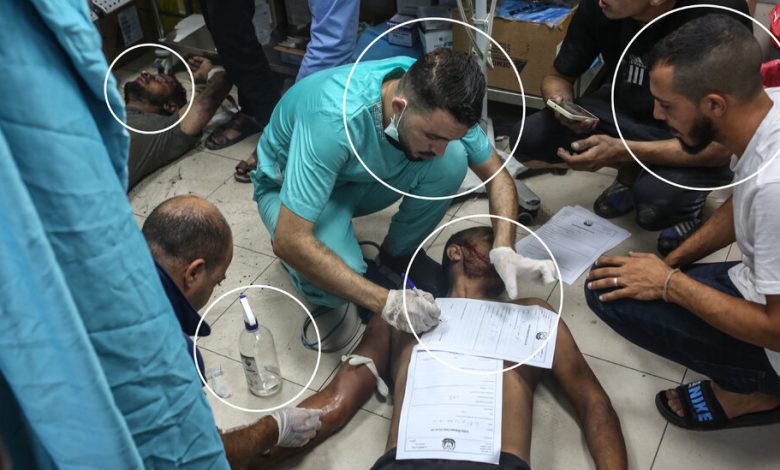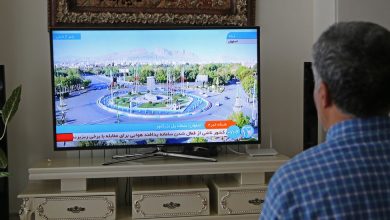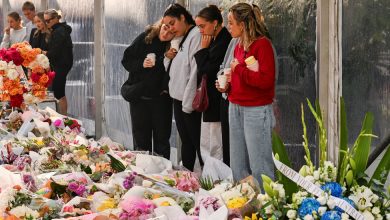What One Photo Shows About a Gaza Hospital in Chaos









In One Image The Patient By Samar Abu Elouf
Beds are scarce at Nasser Hospital. So is gauze, disinfectant and even basic pain medicine. But in wartime Gaza, there is no shortage of patients.
With the wounded streaming in after an explosion in the southern city of Khan Younis, this doctor knows he has little time to tend to his patient before he must move on to the next.
New arrivals often end up on the floor. Without anything to lean on to take notes, doctors sometimes have little choice but to use the patients themselves.
That bottle does not hold medical-grade disinfectant. The hospital has had to make do with pandemic-era hand sanitizer.
It was 8:15 in the evening on Oct. 24, two weeks into Israeli airstrikes that followed a bloody attack by Hamas. This man was among those wounded in a residential area.
As the doctors race to try to save lives, the chaos presses in. People are wailing. Many are seriously wounded. Others are trying to find relatives. Families huddle around patients, desperate for information.
Those patients who are saved cannot expect to stay long at Nasser Hospital. They are quickly discharged into a city in ruins. Every bit of floor space is needed.
Supported by
SKIP ADVERTISEMENT
What One Photo Shows About a Gaza Hospital in Chaos
-
Share full article
By Samar Abu Elouf
“Red!” “Yellow!” “Green!”
The air at Nasser Hospital is pierced by the cries of medical workers getting their first look at patients coming in from a city under siege. Red is not good. It is for the most seriously wounded people, but even the other codes offer little comfort in a hospital stripped of the most basic necessities.
It is generally very difficult to learn much about the patients I photograph. In this case, the man with the medical forms on him was said to have been pulled from the rubble. What was his name? I do not know. Did he survive? I do not know that, either.
But he appeared to have two things possibly going in his favor: He was a Green. And he was given a space, if only on the floor. The hospital cannot afford to waste time on those who clearly won’t make it.
It is hard to convey the horror that is Nasser Hospital these days.
Everything is a blur. People running, people screaming. Doctors and nurses rushing from patient to patient. Family members desperately looking for the missing, hoping someone can stop and help them.
Every sense is assaulted.
The smell is very difficult. It is like burned skin, or perhaps charred tires mixed with the odor of blood and flesh. It’s a very strange and specific smell — and I fear it may never leave me.
Earlier in the war, the hospital was busy, but things appeared manageable. Then came a flood of refugees, as the Israel military, preparing a ground invasion, warned civilians in the north to evacuate.
The other day I found myself next to a doctor who was saying that before the war, the hospital used to cap daily admissions at 700. “Today, on a regular day without shelling, we accept more than 2,000 cases,” the doctor said.
Like many hospitals in Gaza, fuel shortages tied to the Israeli and Egyptian blockade have left Nasser struggling to keep the lights on and the equipment running. Critically needed food and medical supplies are said to be trickling into the territory, but when I ask the staff at Nasser about it, they tell me: “We haven’t received anything.”
And so children come in shivering with fever, and with no acetaminophen, little can be done for them. I often pass by the pediatric unit, and it is always full.
This is all I can tell you. This is what I have seen with my own eyes.

Eric Nagourney contributed reporting.




